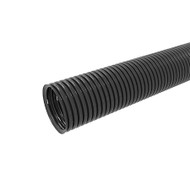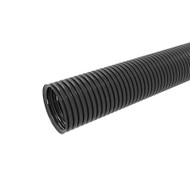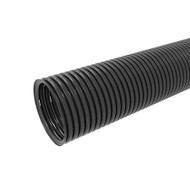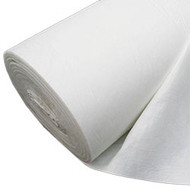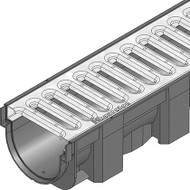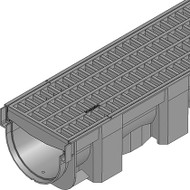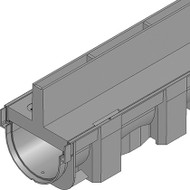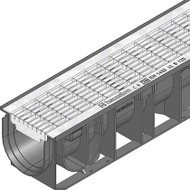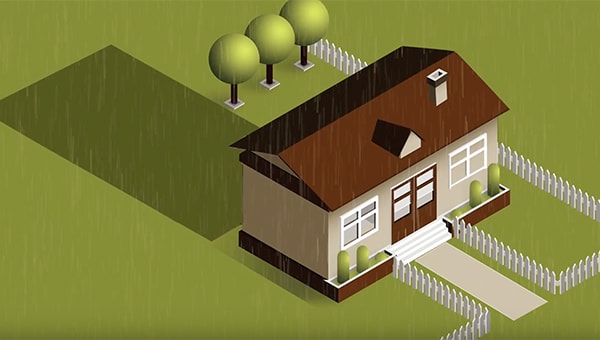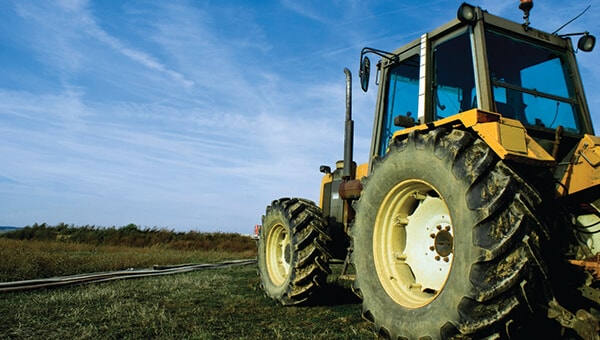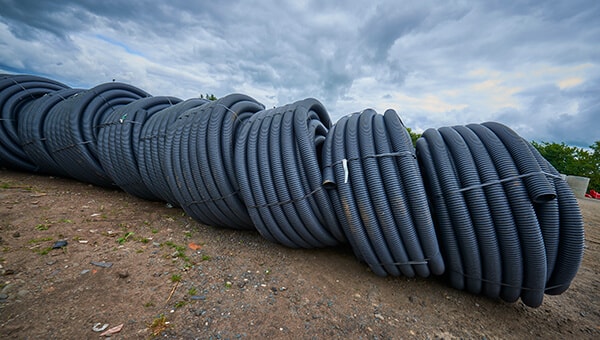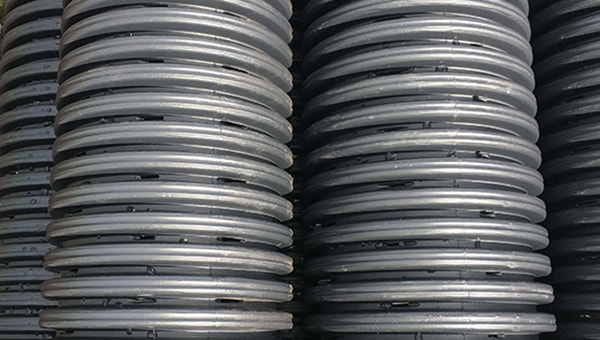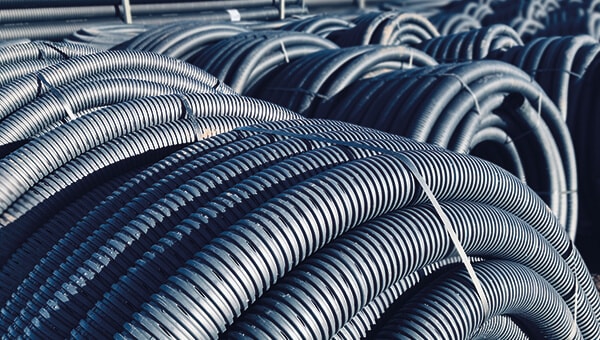After a winter and typical British summer, of constant rain, your garden or lawn can be left waterlogged and soggy. With our ever changing environment it is hard to predict the weather from one week to the next. To keep your garden looking its best through storms and heavy rain, land drain is the ideal solution.
What products do you need for lawn drainage?
Choosing land drain sizes
The size of your lawn (or the area you would like to be drained) affects the size of pipe you will need. Choosing the right size is a delicate balance; too small a diameter and the drainage problem won't be fixed; too large and grass won't have enough water to grow. Laying a smaller diameter in a herringbone layout is much more effective than just switching to a larger diameter.
For smaller standard garden lawns a 60mm perforated pipe would be used; for much larger garden areas, or smaller gardens with a big drainage problem, an 80mm perforated pipe can be used. Flexible drainage coils are also available in 100mm diameter, for areas such as playgrounds and small parks, and 160mm diameter for large open areas.
In really heavy clay soil, consider skipping land drainage altogether and just having runs of stone-filled trenches instead.
What gravel should I use with land drainage?
You will need gravel in the trenches to replace the soil you remove; a pea shingle gravel no larger than 40mm is recommended. In the ground water takes the path of least resistance, and in heavy clay-type soil, stone is much easier to flow through. Water is attracted to the trenches and seeps through into the land drainage system.
Any land drainage system should use gravel trenches. It is not recommended to use plain or filter wrap sock land drain on its own in the ground as either will quickly clog with silt and debris.
Do I need geotextile with land drainage?
It is recommended to use a non-woven geotextile membrane to line the trench during installation. The sheet prevents fine soil from entering the gravel and seeping into the land drain, which could cause a blockage (that's difficult to clear) in the future. Don't use weed fabric as it will quickly degrade.
You can also find geotextile filter wrap - a sort of sock that fits around the flexible land drain pipe. The wrap bridges the corrugations of the pipe, creating a much larger surface area for water absorption, to increase the efficiency of the system. You can use both geotextile to line the trench and filter wrap socks on the land drain together - but be careful not to create a super efficient system that may prevent any lawn growth. It is typically used to solve persistent drainage problems with small and medium diameter land drain systems (60 - 100mm) where space to use large diameters is limited.
Flexible Land Drainage Products
How to install in your garden
This is a relatively simple process and can be done in just a few steps.
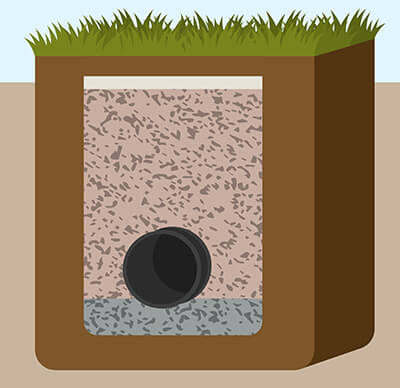
-
Plan ahead
You don't need an in-depth technical construction drawing but making a plan of what, where and how will make a handy guide throughout installation.
-
Dig a trench
Use the following as a guide to digging the trench:
- Must allow for 150mm of gravel backfill either side of the pipe
- Must allow for 450mm minimum depth of cover (150mm top soil, 300mm drainage layer)
- Must allow for 100mm of gravel backfill for the base layer at the bottom of the trench
For 80mm land drain the trench width would be 380mm (2 x 150mm + 80mm pipe) and height 630mm (100mm base + 80mm pipe + 300mm drainage layer + 150mm top soil).
This is important if you are planning on aerating your lawn - the pipe must be deep enough so it's not damaged by spiking or other maintenance. You can adjust the depth of the drainage layer to suit the soil type and local watertable. Trenches deeper than 1.2m must be shored to prevent instability and collapse.
-
Lay the geotextile
This should effectively wrap the whole trench to protect the system.
-
Lay the land drain
Place and level 100mm of gravel backfill in the bottom of the trench. There's no need for mechanical compacting - gravel does a good job at compacting itself in such a small space.
The drains have to be at a slight angle to ensure gravity does its job and water flows smoothly; a 1:150 gradient is perfect but no more than 1:100. The lengths of land drain can be cut easily using most conventional saw tools, but must be done in between corrugations, and drains joined together to create a herringbone layout using coil connectors or multi-junctions.
-
Add a gravel backfill
Using gravel allows the water to flow freely and seep down through into the land drain where the water is carried to a discharge point or a soakaway crate. Fill the trench up with a minimum layer of 300mm gravel backfill to a depth of about 150mm from the surface.
-
Cover
Simply recover your trench with the rest of the geotextile fabric, the rest of the top soil and grass, and violà! You have a complete lawn drainage system.
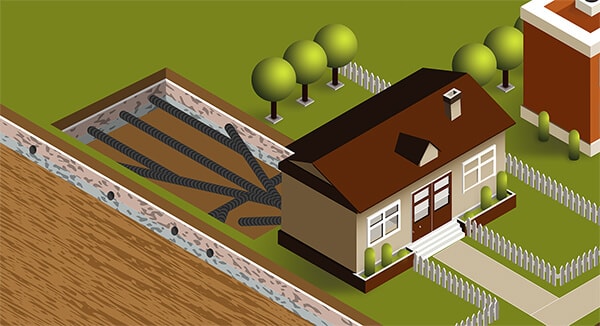
Why choose land drainage for your lawn?
- As you see in the steps above it is easy to install and can be done by yourself without any paid help if desired.
- Land drainage is available in coils in various lengths from JDP meaning they are flexible and easy to transport and handle.
- Once installed your problem is fixed! There’s no need to replace the system until the end of its life if installed correctly and the right diameter has been chosen this method should quickly solve your lawn drainage problem.
- TIP! For an effective drainage system, junctions can be used to create a herringbone layout and connectors used to connect lengths of land drain together.
Channel Drainage in Gardens
Land drainage isn't the only product available to help alleviate drainage issues in your garden; using channel drainage at the edges of your patio or hard landscaped areas could help reduce surface water flowing onto lawns and prevent water pooling. Channel drain is also known as threshold drainage, linear drainage, or branded pseudonyms such as ACO drain.
Channel drain is chosen by load rating; A15 channel drains are typically used in gardens and B125 channel drains are found on driveways.

